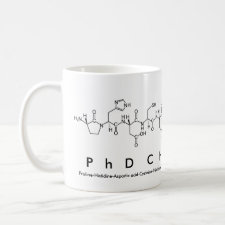
Authors: Rackow B
Article Title: Imprinting of molecular information on surfaces of organic high polymers.
Publication date: 1967
Journal: Zeitschrift für Chemie
Volume: 7
Issue: (10)
Page numbers: 398-399.
Abstract: An effort was made to det. whether phenol-melamine-HCHO (I) polycondensates would remember the presence of adsorbed Cu phthalocyaninetetrasulfonic acid (II) after it had been removed, and whether it would react toward II in a selective manner analogous to silica gel and some org. substances. Imprinting was accomplished by adsorbing II on I and drying at 110°, whereby the chains were brought into motion, contact between Cl- and H+ generating HCl, and 4 basic ions electrostatically bound around each II, which was then frozen into position by cooling to room temp. The desorption of II in water at pH 10-12 left the centers empty. Investigated were 4 samples consisting of imprinted resin doped with melamine (III), III-doped resin, imprinted resin without III, and resin without III. Results according to adsorption isotherms indicated that only a small amt. of nonspecific absorption took place for resins without bases and no imprinting could be proven, as was the case with base-contg. substances that absorbed 2-3 times as much III in the imprinted state. The effects of imprinting were only found in the nonstatistical distribution of the bases on the resin, but not in the open-hole structure as in silica gel.



Join the Society for Molecular Imprinting

New items RSS feed
Sign-up for e-mail updates:
Choose between receiving an occasional newsletter or more frequent e-mail alerts.
Click here to go to the sign-up page.
Is your name elemental or peptidic? Enter your name and find out by clicking either of the buttons below!
Other products you may like:
 MIPdatabase
MIPdatabase









